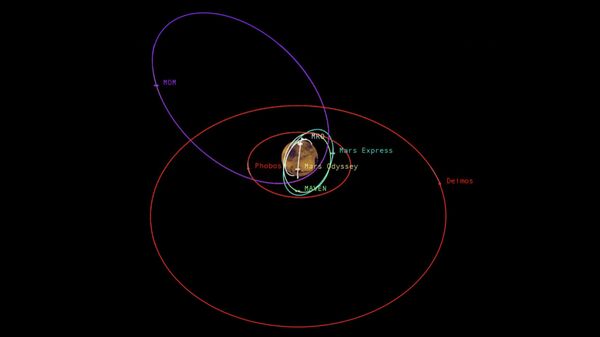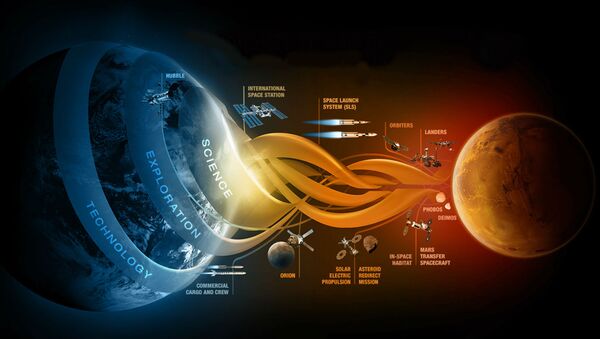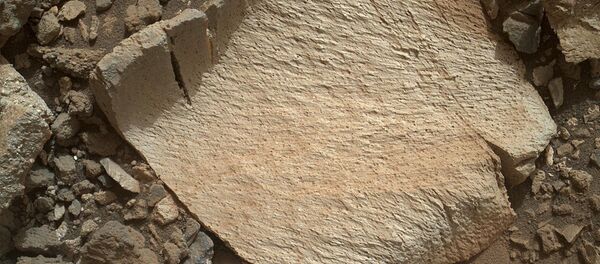If 2013’s "Gravity" taught us anything, it’s that there’s little room for error in space. One defunct satellite bumps into your space shuttle, and suddenly you’ve got a chain reaction which pretty much brings down every space station every launched into orbit.
We almost lost Sandra Bullock.
While it may be over 100 million miles away from Earth – and presumably immune to the traffic problems that plague Interstate 405 in Los Angeles – the space around Mars is also becoming surprisingly crowded. India launched its Mangalyaan probe last year, immediately followed by NASA’s Mars Atmosphere and Volatile Evolution (MAVEN) spacecraft. They’re now rocketing around Mars, often narrowly avoiding the Mars Odyssey, Mars Reconnaissance Orbiter (MRO), and Mars Express probes also in orbit.
Not to mention Phobos and Deimos, the planet’s two moons. While their orbits are typically further out than that of the spacecraft, there are points of overlap.
"Previously, collision avoidance was coordinated between the Odyssey and MRO navigation teams," Robert Shotwell, Mars Program chief engineer with NASA’s Jet Propulsion Laboratory, said in a statement.
But the new spacecraft are complicating things.

"There was less of a possibility of an issue. MAVEN’s highly elliptical orbit, crossing the altitudes of other orbits, changes the probability that someone will need to do a collision-avoidance maneuver," Shotwell said. "There’s still a low probability of needing a maneuver, but it’s something we need to manage."
To accomplish that, the agency relies on Deep Space Network. With communications facilities in the US, Spain, and Australia, the system utilizes a global antenna network designed to assist interplanetary spaceflight.
Using ultra-sensitive receivers, DSN can keep track of any vessel travelling over 10,000 miles from Earth. If any of those spacecraft appear to be getting too close to one another, an alert is sent to the remote pilot, who can then alter the flightpath.
The system is already proving its worth. In January, an automated signal warned of a potential collision between MRO and MAVEN, which would pass within two miles of each other. Thankfully, avoidance maneuvers turned out to be unnecessary.
Monitoring, of course, can only do so much. The Mars Global Surveyor, an old mapping satellite which went dark in 2006, is also being tracked by Deep Space Network. If it were to enter the flight path of one of the active probes, those could be steered away. But because NASA has lost communication with Surveyor, it could do little if that satellite was on a collision course with either of the two moons or a rogue asteroid.
Over 19,000 large pieces of space junk are being tracked in orbit around Earth. If a similar buildup were to occur around Mars, it could add strain on the tracking system, and make future missions to the Red Planet exponentially more complicated.




